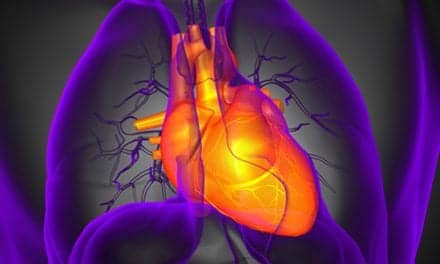At SLEEP 2022, SleepRes LLC introduced the V-Com, a CPAP accessory that the company describes as “training wheels for CPAP.” It softens peak inspiratory flow of positive airway pressure (PAP) devices.
V-Com is added between the CPAP mask and the CPAP hose and is engineered to reduce inspiratory pressure and flow to provide comfort with minimal to no reduction in expiratory pressure (EPAP). After weeks or months when the patient can easily tolerate the peak flow and inspiratory pressure of PAP therapy, the V-Com can be removed from the circuit.
“I got to try a prototype of the V-Com several months ago, and the comfort was dramatic, especially at higher pressures,” says John Cason, regional senior vice-president of Adapt Health, in a release. “We have been waiting for the launch this week at APSS because we believe [the V-Com] is going to improve adherence, and at Adapt that is our goal.”
The V-Com is for new (or struggling) patients on CPAP and bi-level PAP for noninvasive ventilation (NIV). Like training wheels on a bicycle, V-Com helps patients adjust easier and faster to CPAP, according to SleepRes.
“Physicians, respiratory therapists, and sleep techs are loving our training wheels analogy,” says Kami Harold, vice-president of sales for SleepRes, in a release. “Not every child needs training wheels, but training wheels makes learning to ride a bike faster and safer for all kids. It is the same with V-Com and CPAP.” V-Com is not to be confused with expiratory reduction algorithms that are native to some CPAP devices and reduce EPAP. V-Com reduces inspiratory pressure for comfort but maintains EPAP for therapy and safety from rebreathing CO2.
“So far over 90% of new CPAP patients who have tried the V-Com felt the difference and believe the V-Com will help them adjust to CPAP faster,” says Harold. “We tell sleep clinicians that 15 seconds of experiencing the V-Com yourself is better than 15 minutes of us explaining the physics and engineering of the device.”
“Clinicians commonly ask, ‘Can’t I just turn the pressure down?’ The answer is clearly no,” says Allen Manus, RRT with the Veterans’ Administration, in a release. “Turning the pressure down lowers EPAP, which increases respiratory events and the risk of rebreathing [CO2]. Plus, turning down the pressure requires running down a doctor to get an order and then later running them down again to change the order back. V-Com is not only better for my patients but better for our staff.”
Carmen Keasling, RPSGT, says in a release, “We are finding that during CPAP titrations that the V-Com can resolve a patient’s mouth coming open and eliminate the need for a chinstrap. [V-Com] is not only better for the patient; it makes it easier on our sleep techs.”
In SleepRes’ testing, the V-Com had minimal effect on auto-PAP and residual index algorithms. Testing results are available on the frequently asked questions section of SleepRes’ website. “You can find the results of our testing with various algorithms and testing with NIV and oxygen therapy,” says Harold. “And we have some preliminary data suggesting the V-Com may reduce treatment-emergent central sleep apnea.”










